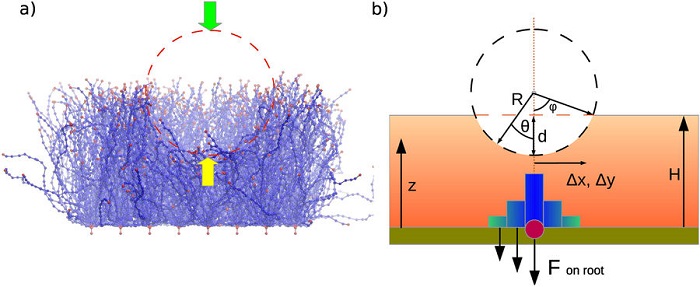Structure and elasticity of endothelial glycocalyx
Structure and elasticity of bush and brush-like models of the endothelial glycocalyx
Publication highlight: Associate Prof. Vladimir Lobaskin
Journal reference: (opens in a new window)Scientific Reports, 8, 240 (2018)(opens in a new window)
The endothelial glycocalyx (EG), a sugar-rich layer that lines the luminal surface of blood vessels, is an important constituent of the vascular system. Although the chemical composition of the EG is fairly well known, there is no consensus regarding its ultrastructure. While previous experiments probed the properties of the layer at the continuum level, they did not provide sufficient insight into its molecular organisation. This paper addresses the EG mechanics using two simple brush and bush-like simulation models, and use these models to describe its molecular structure and elastic response to indentation. Authors analyse the relationship between the mechanical properties of the EG layer and several molecular parameters, including the filament bending rigidity, grafting density, and the type of ultrastructure . It is shown that variations in the glycan density determine the elasticity of the EG for small deformations, and that the normal stress may be effectively dampened by the EG layer, preventing the stress from being transferred to the cell membrane. Furthermore, the bush-like model is used to evaluate the forces and energies required to overcome the mechanical resistance of the EG.
